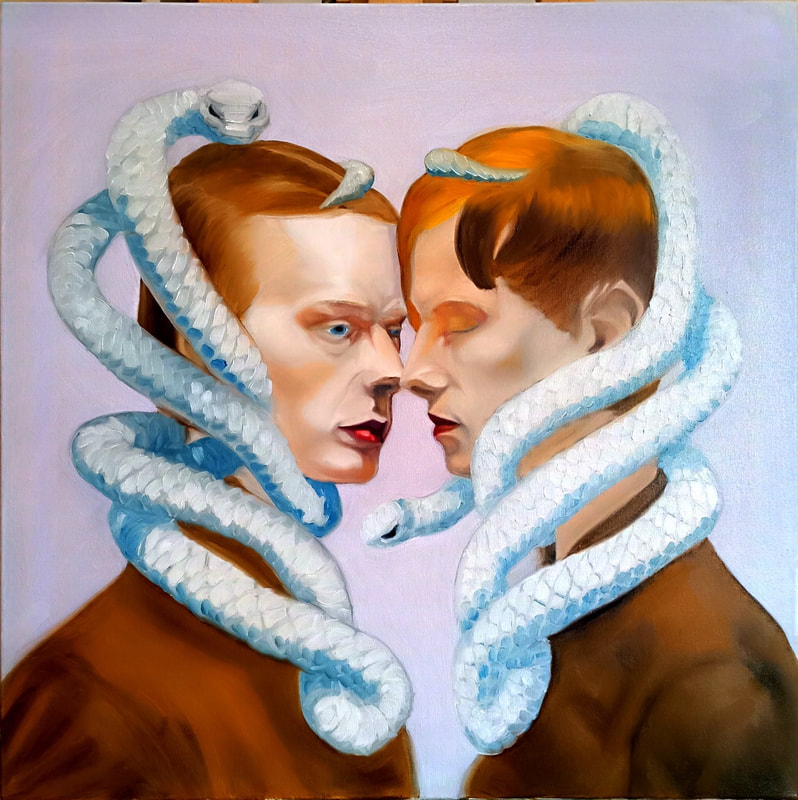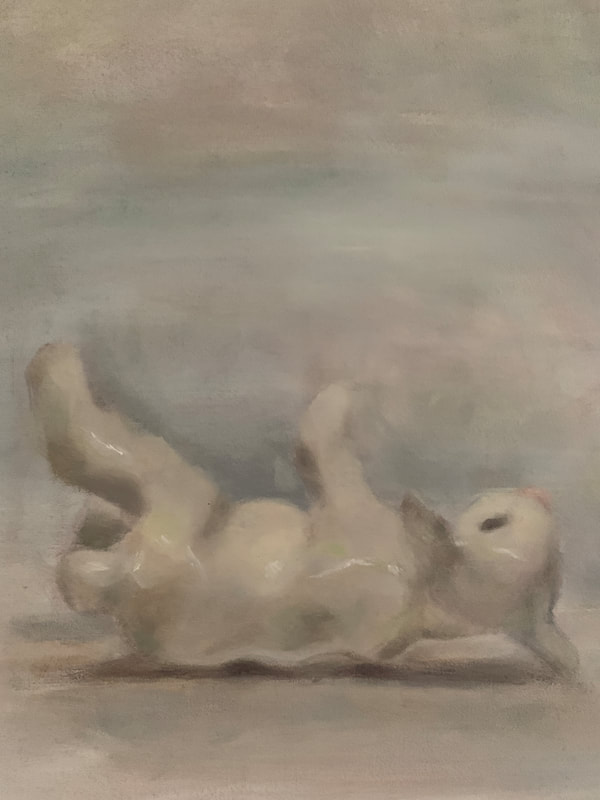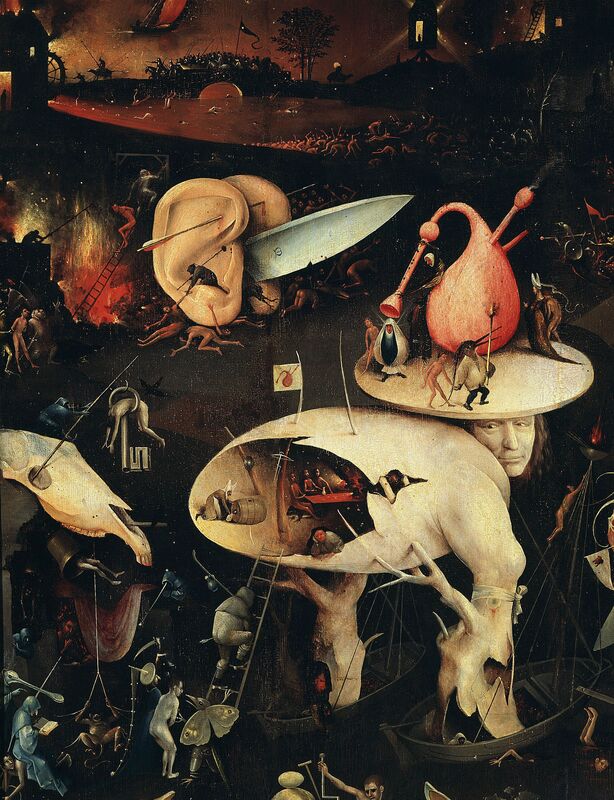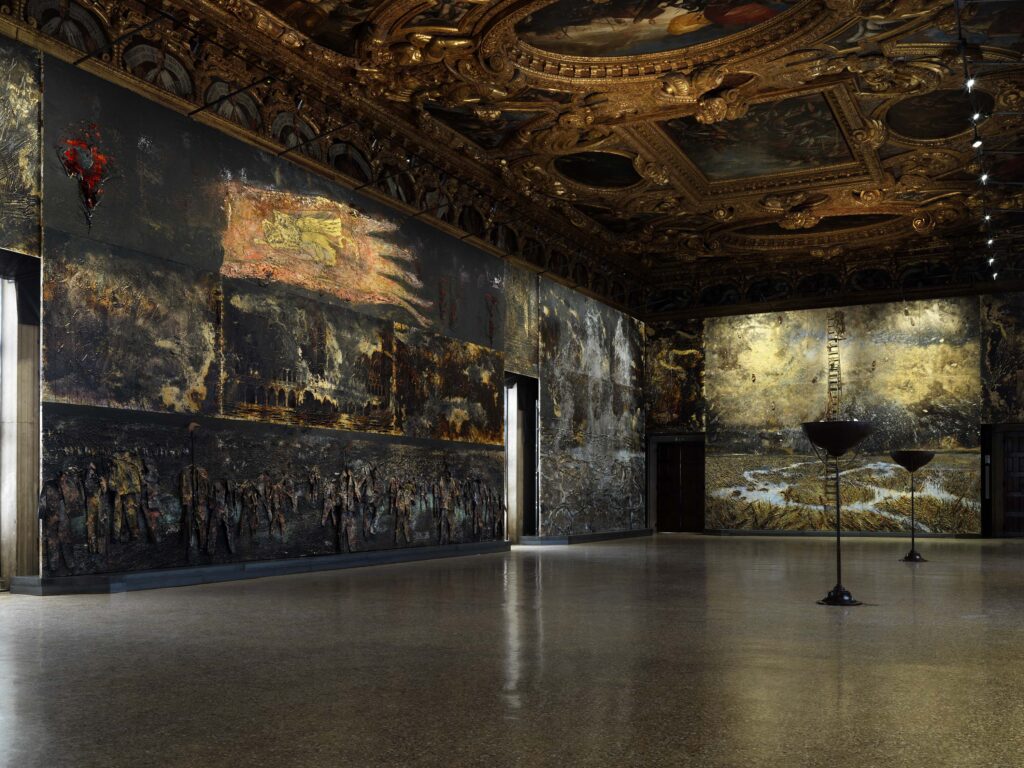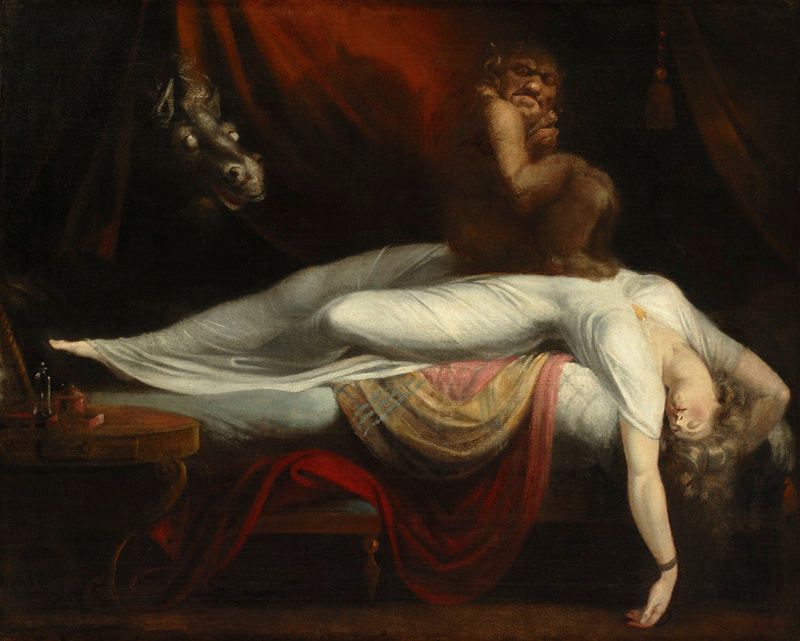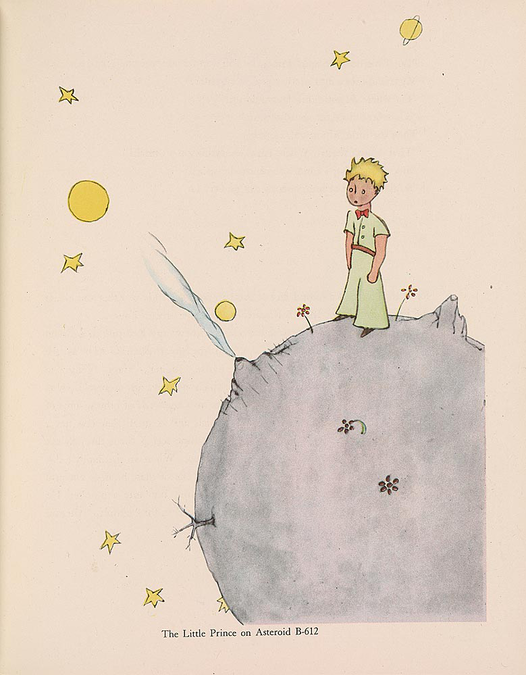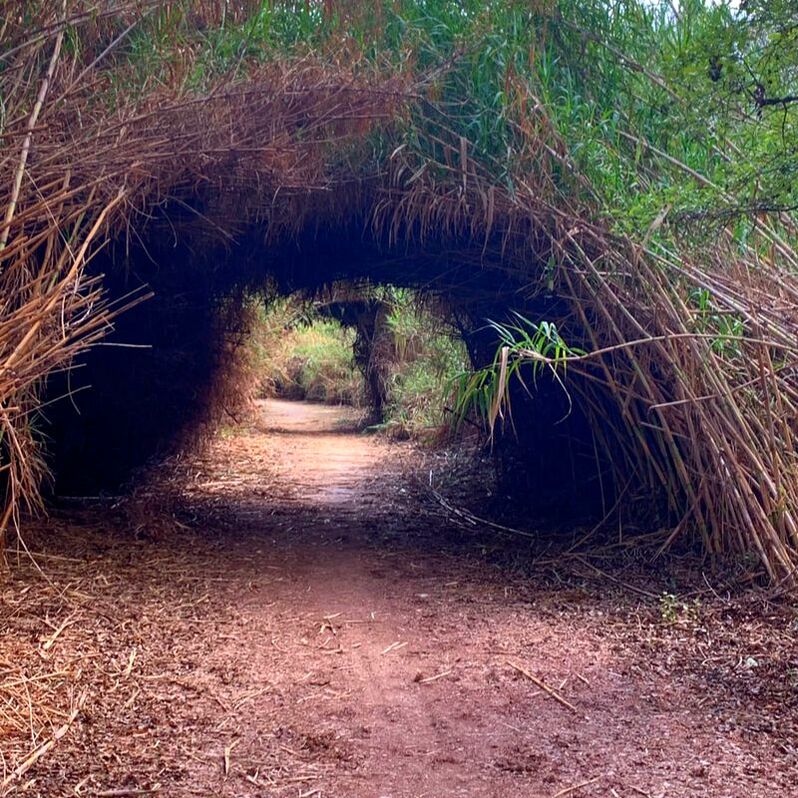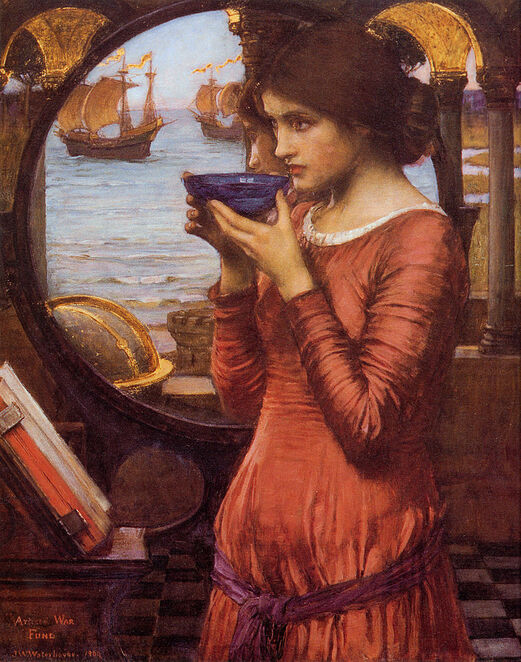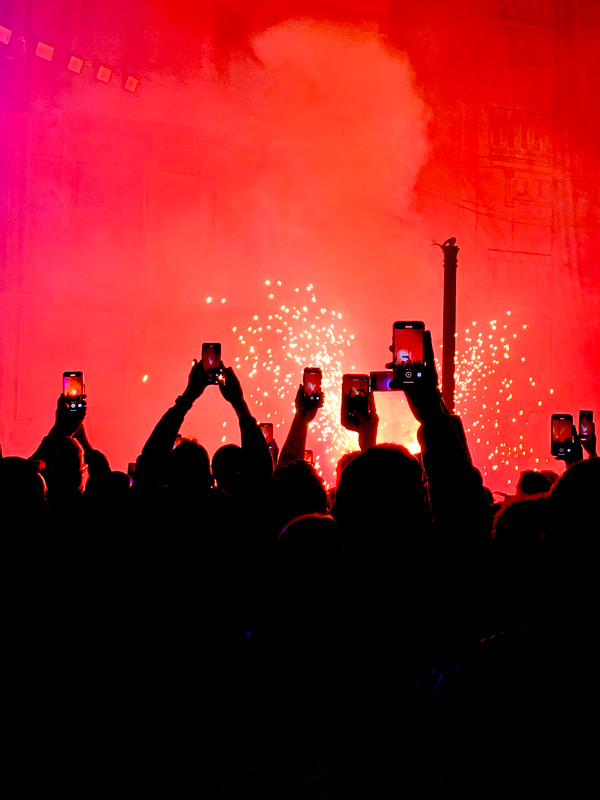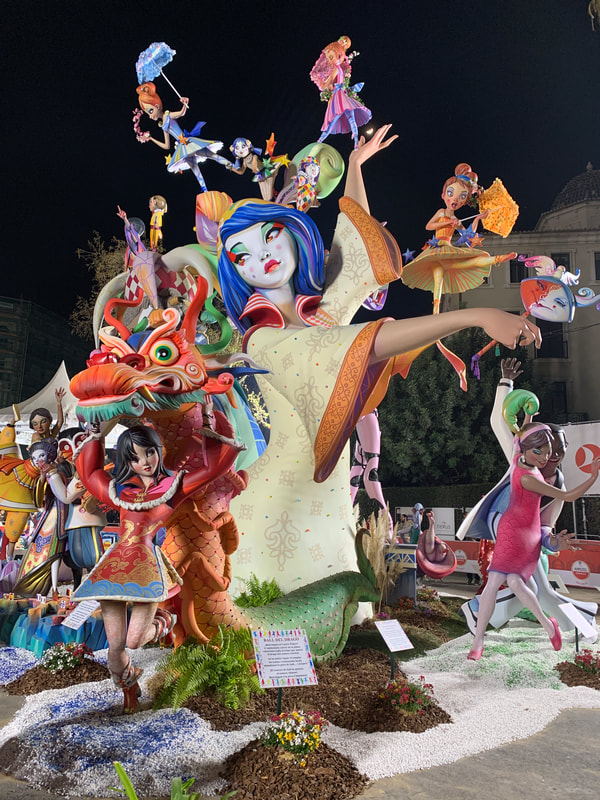|
In the vast tapestry of human history, art stands as a testament to our creativity, ingenuity, and perhaps, our connection to something beyond the tangible realm. Ludovic Slimak, an archaeologist, posits that art represents a continuum, tracing its lineage from the earliest cave paintings to our modern, technology-driven world. On the other hand, Aubrey Ramage-Lay, a contemporary artist, proposes a more mystical perspective, suggesting that art is born from the inherent magic of the universe. As we delve into the depths of these contrasting notions, we embark on a journey through time, exploring the thesis and antithesis of human artistry, and pondering the intricate relationship between art and magic. Slimak's assertion that art is a continuum is deeply rooted in archaeological evidence. From the breathtaking cave paintings of Lascaux, dating back over 17,000 years, to the intricate sculptures of ancient civilizations like the Egyptians and Greeks, art has served as a medium for human expression across millennia. These ancient artworks not only reflect the aesthetic sensibilities of their creators but also provide insights into their cultures, beliefs, and aspirations. For example, the cave paintings of Altamira in Spain depict scenes of hunting and wildlife, offering a glimpse into the daily lives and rituals of prehistoric humans. Moreover, Slimak's perspective extends beyond traditional forms of art to encompass the modern era, where technology and innovation have ushered in new modes of expression. From Renaissance masters like Leonardo da Vinci and Michelangelo to contemporary artists pushing the boundaries of digital art and virtual reality, the evolution of art mirrors the progression of human society itself. The advent of photography, cinema, and digital media has democratized the artistic process, allowing individuals from diverse backgrounds to participate in the creation and consumption of art on a global scale. However, Ramage-Lay presents a compelling counterpoint, suggesting that art is not merely a product of human endeavor, but a manifestation of the inherent magic woven into the fabric of the universe. This perspective draws inspiration from ancient mystical traditions and esoteric philosophies that view art as a channel for connecting with the divine or transcendent aspects of reality. In many indigenous cultures, art is intertwined with spiritual practices, serving as a bridge between the material and spiritual realms. For instance, the intricate geometric patterns found in Islamic art are believed to reflect the divine order of the cosmos, while the sacred symbols of indigenous tribes convey profound spiritual meanings. Furthermore, Ramage-Lay's notion of art as magic highlights the transformative power of creative expression. Throughout history, artists have wielded their craft to evoke emotions, provoke thought, and inspire change. From the political propaganda of totalitarian regimes to the revolutionary fervor of social movements, art has been a potent tool for shaping public consciousness and challenging prevailing norms. The Surrealist movement, spearheaded by artists like Salvador Dalí and André Breton, sought to tap into the subconscious realm through dreamlike imagery and symbolic motifs, blurring the boundaries between reality and illusion. The nature of art has been a subject of intense debate for centuries. There are two main perspectives:
These two perspectives are not mutually exclusive. In fact, they often overlap. A single piece of art can be a personal expression of the artist and also hold a certain magic for those who view it. The debate continues because art is subjective and its interpretation can vary greatly among different individuals. In light of these contrasting perspectives, it becomes evident that art occupies a liminal space between the tangible and the intangible, the mundane and the mystical. While Slimak's thesis underscores the historical continuity of artistic expression across cultures and civilizations, Ramage-Lay's antithesis invites us to consider the metaphysical dimensions of art and its profound impact on human consciousness. Perhaps, the truth lies somewhere in between, where the creative impulse of humanity converges with the ineffable mysteries of the cosmos. In conclusion, the debate surrounding the nature of art—whether it is a continuum of human expression or a manifestation of magic—remains a subject of profound fascination and inquiry. As we contemplate the rich tapestry of human creativity woven throughout history, we are reminded of the enduring power of art to illuminate “the human” experience and transcend the boundaries of time and space. Whether viewed through the lens of archaeology or mysticism, art continues to captivate our imaginations and inspire us to explore the depths of our collective consciousness.
0 Comments
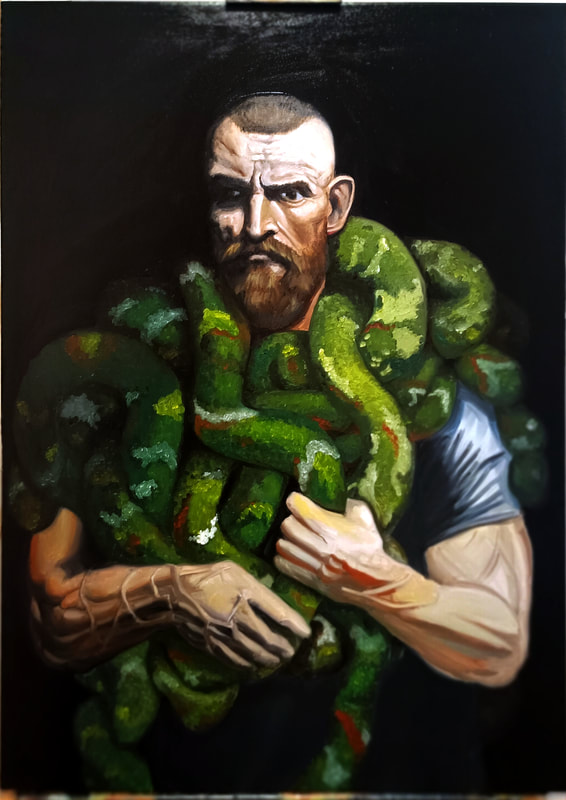 Snake Handler by Aubrey Ramage-Lay Snake Handler by Aubrey Ramage-Lay From the earliest civilizations to the contemporary art scene, the snake has slithered its way into the human imagination, leaving an indelible mark on art across cultures and epochs. Often symbolizing both fear and fascination, the representation of snakes in art reflects humanity's complex relationship with these creatures. Let's embark on a mesmerizing journey through time, exploring how snakes have been depicted in art from antiquity to modern times. Antiquity: Symbols of Power and MythologyIn ancient civilizations, snakes held a prominent place in religious and mythological contexts. In Mesopotamia, the serpent was associated with fertility and protection, depicted in artifacts like the Sumerian 'Serpent Rods' dating back to 3000 BCE. Similarly, in ancient Egypt, the cobra was revered as a symbol of royalty and protection, epitomized by the uraeus, a stylized upright cobra worn as a headdress by pharaohs. Greek and Roman mythology abound with tales of serpentine creatures. The ancient Greeks saw snakes as guardians of sacred spaces, with the python at Delphi serving as the oracle of Apollo. Meanwhile, the myth of the Gorgon Medusa, whose hair was transformed into snakes, captivated artists for centuries, with one of the most famous renditions being Caravaggio's "Medusa" (1597). Renaissance: Allegories and SymbolismDuring the Renaissance, artists drew inspiration from classical antiquity, infusing their works with allegorical meanings. Snakes often symbolized temptation, sin, and the darker aspects of human nature. In Michelangelo's fresco "The Fall of Man and the Expulsion from Paradise" on the Sistine Chapel ceiling (1508-1512), the serpent coils around the Tree of Knowledge, tempting Eve with the forbidden fruit, symbolizing the origin of sin and the fall of humanity. In Northern European art, particularly in the works of Albrecht Dürer, snakes were portrayed with meticulous detail, imbued with symbolic significance. Dürer's engraving "Adam and Eve" (1504) features a sinuous serpent winding its way around the Tree of Knowledge, emphasizing the pivotal moment of temptation and humanity's expulsion from paradise. Romanticism: The Sublime and the MysteriousThe Romantic era ushered in a fascination with the sublime and the mysterious, prompting artists to explore the untamed forces of nature, including serpents. In William Blake's watercolor painting "The Temptation and Fall of Eve" (1808), the serpent is depicted as a sinuous, sinewy creature, embodying both allure and danger, as it entices Eve with the forbidden fruit. Similarly, in John Martin's apocalyptic paintings, such as "The Great Day of His Wrath" (1851-1853), serpents writhe amidst scenes of destruction, symbolizing chaos and the darker aspects of the human condition. The Romantic fascination with the exotic also spurred artists like Henri Rousseau to depict snakes in lush, tropical settings, as seen in his painting "The Snake Charmer" (1907), evoking a sense of mystery and enchantment. Modernism and Beyond: Surrealism and Symbolic ResonanceIn the 20th century, artists explored new avenues of expression, with snakes continuing to feature prominently in art, albeit in more abstract and symbolic forms. Surrealist artists like Salvador Dalí often incorporated serpentine imagery in their works, imbuing them with dreamlike symbolism and psychoanalytic undertones. Dalí's painting "The Elephants" (1948) features elongated, elephantine legs supporting obelisks adorned with snakes, creating a surreal and enigmatic composition. Contemporary artists have continued to recontextualize the symbolism of snakes in art, exploring themes of transformation, regeneration, and the subconscious. In works like Damien Hirst's "The Physical Impossibility of Death in the Mind of Someone Living" (1991), a preserved shark suspended in formaldehyde, the serpent appears as a primal symbol of mortality and existential dread, inviting viewers to confront their own mortality. A Timeless SymbolThroughout history, the representation of snakes in art has evolved, reflecting shifting cultural, religious, and artistic paradigms. From the divine serpents of antiquity to the allegorical motifs of the Renaissance, and the surreal interpretations of the modern era, snakes continue to captivate and intrigue artists and audiences alike. As symbols of temptation, wisdom, danger, and regeneration, serpents embody the timeless complexities of the human experience, forever entwined with our collective imagination. Images: Aubrey Ramage-Lay & Carmen Llin from current and upcoming exhibitions at the gallery. Their work is the inspiration for this blog.
In the vast realm of art, symbolism often acts as a silent language, weaving narratives and evoking emotions through imagery. Among the myriad symbols employed by artists, snakes and sheep stand out for their rich and contrasting connotations. From ancient myths to contemporary canvases, these creatures have been recurrent motifs, each carrying layers of meaning that transcend time and culture. In this exploration, we delve into the symbolism of snakes and sheep in modern art, examining how artists have imbued these creatures with significance and symbolism. Snakes:Throughout history, snakes have held a complex and multifaceted symbolism, embodying both menace and wisdom, temptation and transformation. In modern art, the serpent continues to captivate artists, serving as a potent symbol of various themes, including:
Sheep:In contrast to the enigmatic allure of snakes, sheep are often associated with qualities of innocence, docility, and conformity. Yet, in modern art, artists have subverted these conventional associations, infusing the image of the sheep with unexpected layers of meaning, including:
In conclusion, snakes and sheep continue to be powerful symbols in modern art, each carrying with them a wealth of meaning and symbolism that resonates across time and culture. Whether depicting the serpentine allure of temptation or the gentle innocence of the flock, artists harness the imagery of these creatures to explore universal themes of human experience and provoke thought and introspection in their viewers. Through their art, they invite us to delve deeper into the hidden realms of symbolism and unlock the secrets of the serpent and the flock. 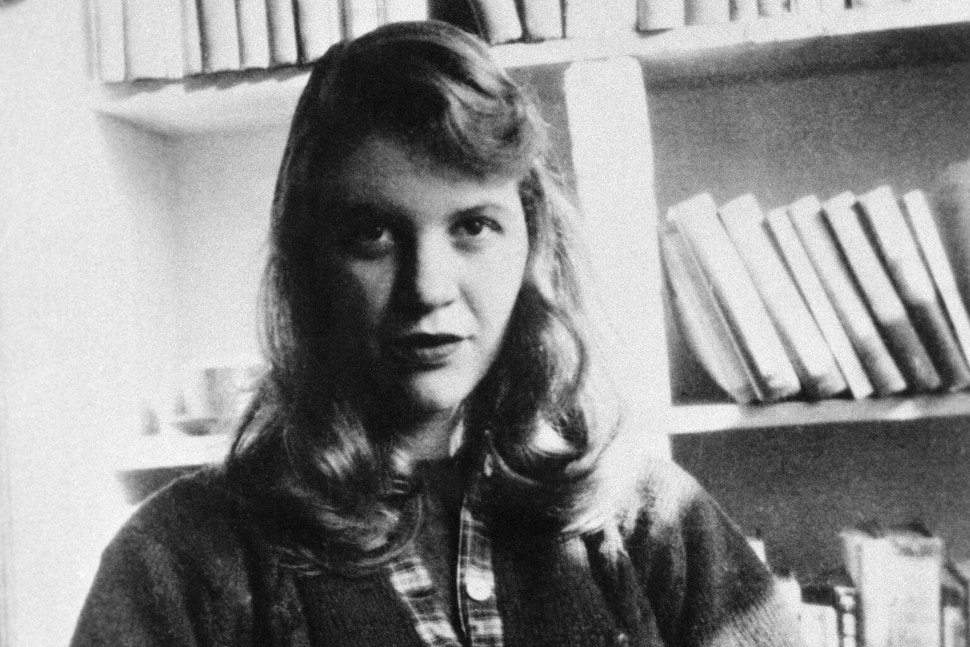 Sylvia Plath 1932 - 1963 Source: poetryfoundation.org Sylvia Plath 1932 - 1963 Source: poetryfoundation.org In the romanticized image of the artist, there's a notion of boundless passion, an undying love affair with their craft. Yet, behind the scenes, there's a darker narrative that often remains untold—the tale of artists who, after years of devotion, find themselves at odds with the very thing they once cherished. This phenomenon, where artists start to hate art and even themselves, is a complex interplay of psychological, societal, and neuroscientific factors. The Rise and Fall of Passion:At the outset of their artistic journey, creators are often driven by an intense passion—a fervor that propels them through sleepless nights and countless revisions. This initial spark ignites creativity and fuels productivity. However, as time wears on, this once-blazing fire can dwindle into a smoldering ember, leaving artists disillusioned and disheartened. Example 1: Vincent van GoghVincent van Gogh, celebrated for his vibrant works and tumultuous life, experienced firsthand the tumultuous relationship between an artist and their craft. Despite his undeniable talent, van Gogh battled inner demons and feelings of inadequacy. In his letters to his brother, Theo, he expressed profound despair, lamenting his inability to capture the essence of his vision on canvas. Van Gogh's tormented psyche serves as a poignant reminder of the anguish that can accompany artistic pursuit. Example 2: Sylvia PlathRenowned poet Sylvia Plath, whose haunting verses continue to resonate with audiences today, grappled with profound inner turmoil throughout her life. Plath's poetic prowess was undeniably remarkable, yet her relationship with her craft was fraught with anguish. In her semi-autobiographical novel "The Bell Jar," Plath vividly depicts the suffocating pressure of creative expectations and the relentless pursuit of perfection—a struggle mirrored in her own life. The Psychological Toll:Behind the veneer of creativity lies a myriad of psychological complexities. Artists are often plagued by self-doubt, perfectionism, and the insatiable desire for validation. Moreover, the very act of creation can serve as a double-edged sword, simultaneously offering solace and stirring turmoil within the artist's psyche. Example 3: Pablo PicassoPablo Picasso, hailed as one of the most influential artists of the 20th century, experienced periods of profound self-doubt despite his monumental success. Picasso's relentless pursuit of innovation and perfection left him perpetually dissatisfied with his work, fueling a cycle of self-criticism and frustration. In his later years, he confessed, "Every act of creation is, first of all, an act of destruction"—a testament to the tumultuous relationship between creativity and self-doubt. The Neuroscience of Creativity:From a neuroscientific perspective, creativity is a complex interplay of cognitive processes, neurotransmitters, and neural networks. While the creative process is often romanticized as a flash of inspiration, it is, in reality, a nuanced dance between the conscious and unconscious mind—a delicate balance that can easily be disrupted. Example 4: Brain Imaging StudiesRecent advancements in neuroimaging techniques have shed light on the neural underpinnings of creativity. Studies utilizing functional magnetic resonance imaging (fMRI) have revealed that during moments of creative insight, there is increased activity in regions associated with divergent thinking and cognitive flexibility, such as the prefrontal cortex and the default mode network. However, prolonged exposure to stress and pressure can impair these cognitive processes, leading to creative blockages and feelings of disillusionment. Coping Strategies and Resilience:Despite the inherent challenges of the artistic journey, many creators find ways to navigate the turbulent waters of self-doubt and disillusionment. Cultivating resilience, seeking support from peers, and embracing vulnerability are essential tools for weathering the storm of artistic angst. Moreover, adopting a growth mindset—a belief in one's capacity for growth and improvement—can empower artists to overcome obstacles and rediscover their passion for creation. Example 5: Frida KahloFrida Kahlo, revered for her bold and uncompromising self-portraits, faced numerous obstacles throughout her life, including chronic pain and emotional turmoil. Despite these challenges, Kahlo channeled her pain into her art, using her creativity as a means of catharsis and self-expression. Through her resilience and unwavering dedication to her craft, Kahlo transcended adversity, leaving behind a legacy that continues to inspire artists around the world. Conclusion:The journey of the artist is a testament to the paradox of passion—a delicate balance between boundless creativity and profound vulnerability. While the road may be fraught with obstacles and self-doubt, it is also imbued with moments of profound beauty and self-discovery. By embracing the complexities of their craft, artists can navigate the tumultuous terrain of creative pursuit with courage, resilience, and an unwavering belief in the transformative power of art. In the end, it is this enduring passion—the flickering flame that refuses to be extinguished—that sustains artists through the darkest of times, reminding them of the profound significance of their creative journey. As they continue to navigate the ever-shifting landscape of artistic expression, may they find solace in the knowledge that their struggles are not in vain—that within the depths of their despair lies the seed of inspiration, waiting to bloom once more. Fear is an ancient, primal emotion that is intricately woven into the fabric of human existence. From the dawn of our species, fear has been both a guardian and a catalyst, shaping our evolution and etching its presence onto the canvas of history and art. In this exploration, we delve into the profound significance of fear in sculpting human destinies and its poignant manifestation through the lens of artistic expression.
Fear: The Architect of Evolution Fear served as the sentinel of survival in our evolutionary journey. Millennia ago, our ancestors navigated treacherous landscapes fraught with predators, hunger, and uncertainty. Fear acted as the silent orchestrator, urging caution, vigilance, and adaptive responses. The evolution of the brain’s fear circuitry, particularly the amygdala, enabled early humans to process threats and orchestrate a fight-or-flight response, a mechanism still prevalent in modern humans. Those attuned to fear's whispers were more likely to endure, passing down their resilient genes through the corridors of time. The evolutionary significance of fear is palpable in the physiological response it triggers. The adrenaline surge, heightened senses, and the fight-or-flight instinct are evolutionary relics finely honed through years of natural selection. Fear, in its primal essence, safeguarded our ancestors from peril and propelled our species forward on the path of survival. Fear in History: Catalyst of Change Fear has wielded its influence not only in the natural realm but also in the annals of human history. Throughout epochs, fear has been a potent force, shaping the destiny of nations, the rise and fall of empires, and the course of civilization itself. The fear of the unknown, of invaders, of natural disasters, and of divine wrath has steered the course of human events, from migrations to wars, to the establishment of laws and moral codes. Propelled early explorers to brave uncharted waters, expanding the boundaries of human knowledge and influence. Moreover, fear has been a tool of control and domination. Tyrants and rulers throughout history have exploited fear to subjugate populations, wielding it as a weapon to maintain power and authority. From ancient despots to modern autocrats, fear has been a cornerstone of governance, instilling compliance through intimidation and coercion. Yet, fear has also been a catalyst for revolution and change. The fear of oppression and injustice has ignited the flames of rebellion, galvanizing ordinary individuals to stand against tyranny and fight for freedom. From the French Revolution to the Civil Rights Movement, fear has been both the catalyst for change and the rallying cry for justice. Fear in Art: A Reflection of the Human Psyche Art, the mirror of the human soul, bears the indelible imprint of fear. Across civilizations and epochs, artists have sought to capture the essence of fear in its myriad forms – from the primal terror of the unknown to the existential dread of mortality. In the ancient cave paintings of Lascaux, France, we glimpse the fear of predators that haunted our ancestors, immortalized in ochre and charcoal. Art has been a conduit for expressing the human experience, including fear. From the grotesque depictions of hell in medieval religious art to the haunting memento mori in Renaissance paintings, fear has been a persistent theme. It serves as a reminder of mortality, a reflection of societal anxieties, and a commentary on the human condition. In literature, fear finds expression in the haunting tales of Edgar Allan Poe and H.P. Lovecraft, where the darkest recesses of the human psyche are laid bare. In visual arts, the grotesque figures of Hieronymus Bosch and the macabre landscapes of Salvador Dali evoke a visceral response, tapping into our deepest fears and anxieties. Moreover, fear has been a muse for filmmakers, inspiring iconic works of horror that linger in the collective consciousness. From the silent screams of Nosferatu to the chilling suspense of Alfred Hitchcock's Psycho, fear has captivated audiences and sparked a fascination with the darker aspects of human nature. The Dichotomy of Fear and Courage in Art The dichotomy of fear and courage in art is a profound and timeless theme that has been explored by artists across various mediums and cultures throughout history. It delves into the complex interplay between these two fundamental human emotions and how they manifest in the creative process and the final artwork itself. Fear can serve as both a hindrance and a catalyst for artistic expression. On one hand, fear of failure, rejection, or inadequacy can paralyze artists, preventing them from fully exploring their creativity and pushing boundaries. This fear can lead to self-doubt, hesitation, and a reluctance to take risks in their work. Courage, on the other hand, is often seen as the antidote to fear in the artistic process. It is the willingness to take risks, experiment, and expose one's vulnerability through their art. Courage enables artists to push past their comfort zones, confront their fears head-on, and create work that is authentic and impactful. Artists have long juxtaposed fear with its counterpart, courage. The portrayal of heroic figures overcoming fear has inspired generations. For instance, the stoic bravery of Joan of Arc in the face of adversity has been immortalized in paintings, symbolizing the triumph of courage over fear. In many ways, the dichotomy of fear and courage is at the heart of what it means to be an artist. It is a constant balancing act between vulnerability and resilience, doubt and conviction, hesitation, and boldness. Fear and Empathy: Bridging the Divide Paradoxically, fear has the power to unite rather than divide. In experiencing fear, we cultivate empathy – the ability to understand and share the feelings of others. Through the shared experience of fear, we find common ground with our fellow human beings, transcending barriers of language, culture, and ideology. Art serves as a bridge, connecting disparate individuals through the universal language of emotion. In the harrowing images of war-torn landscapes and the haunting melodies of requiems, we confront the collective fears and tragedies of humanity, forging bonds of empathy that transcend the boundaries of time and space. Contemporary Art: A Reflection of Modern Fears In modern times, art continues to reflect our deepest fears, from existential threats like nuclear war and climate change to personal anxieties about identity and belonging. Contemporary artists use their work to provoke thought, challenge societal norms, and provide commentary on the fears that pervade our collective consciousness. To site but a few: Olafur Eliasson works on climate change and environmental degradation, Trevor Paglen's work explores themes of mass surveillance, privacy, and the implications of technology on society, Ai Weiwei is known for his provocative and politically charged artworks that critique authoritarianism, censorship, and human rights abuses, Tracey Emin's autobiographical artworks explore themes of trauma, vulnerability, and emotional struggles, Anselm Kiefer often grapple with existential themes, exploring the weight of history, memory, and mortality, Yinka Shonibare's art investigates issues of colonialism, globalization, and cultural hybridity. These examples demonstrate how contemporary artists engage with and respond to the fears and uncertainties of the modern world, using their creative practice to provoke critical reflection and dialogue on pressing issues facing society today. Conclusion: Embracing the Shadows In the tapestry of human existence, fear is a thread woven into every fiber of our being. From the primordial fears of survival to the existential angst that permeates modern society, fear shapes our perceptions, motivations, and interactions with the world. Yet, fear is not merely a specter to be feared but a catalyst for growth, change, and connection. In embracing our fears, we confront the shadows that lurk within and without, harnessing their power to propel us forward on the journey of self-discovery and evolution. Through art, we confront our deepest fears and vulnerabilities, finding solace in the shared human experience. In the end, it is not the absence of fear but our response to it that defines us – for in the crucible of fear, we discover the true essence of our humanity. All my life I have had this question in my mind, “what did the first human think when he made the first tool? Sorry my PC friends I am using “he” for a human, it can be a “she” or “them”; please indulge my point. Was he thinking “I am making history” or did he not care? He simply wanted to cut that meat, root, or plant, to eat? Was he looking to be great or was he looking to satisfy his need? We will never know until someone invents a usable time machine and goes back a few million years back to ask just what was going through his mind and then report it on CNN, BBC or social media. Meanwhile, we have to be content with more recent history in order to look at the topic, “are we called for greatness or are we called to be happy? This theme has been a subject of contemplation and debate through various philosophical and literary lenses.
I will be using my favorite authors to present my points; Voltaire, Nietzsche, Gibran, Antoine de Saint-Exupéry, and Richard Bach. Voltaire’s Candide satirizes the notion that we live in the “best of all possible worlds,” challenging the idea that the pursuit of greatness inevitably leads to happiness. The protagonist’s journey through a series of misfortunes ultimately leads him to appreciate the simpler aspects of life. Nietzsche’s concept of the Übermensch, or ‘Superman,’ is not, as sometimes thought, about a superior race, but rather an individual’s self-overcoming and self-discovery. It’s a call to forge one’s path and values, which can be seen as a form of achieving greatness, but it also raises questions about the cost to one’s happiness and contentment. Gibran's timeless piece of wisdom, The Prophet, articulated through the voice of Almustafa, celebrates the pursuit of happiness as an intrinsic aspect of the human experience. Almustafa's reflections on love, work, and sorrow evoke a poignant portrayal of the human condition, emphasizing the importance of finding joy and fulfillment amidst life's trials and tribulations. Antoine de Saint-Exupéry’s The Little Prince presents a critique of adult priorities and highlights the importance of relationships and the ‘invisible’ qualities of love and friendship. It suggests that true happiness may lie not in grand achievements but in understanding and valuing the intangible. Bach's timeless fable serves as a poignant reminder that happiness lies not in conformity or external validation but in the unwavering pursuit of one's dreams and aspirations. Jonathan's relentless pursuit of perfection in flight symbolizes the human quest for self-actualization and the fulfillment derived from the pursuit of passion and purpose. In my experience, either when I trained young men and women, or when I taught young minds, or when I worked in companies, I told people to ascend, go beyond, achieve greatness, listen to their higher calling. Was I right? It was just business, because when I came to my own kids, all I asked from them “is for them to be happy”. I was a hypocrite, asking young men to die for a higher cause, but my kids to just be happy. Were we raised and educated to look for greatness other than being happy? Thus, we struggle most of our lives to chase a “greater calling” a “destiny”. Religion usually calls for “greater calls”, “prepare for an afterlife”, “be enlightened”, “you are chosen”. Are we? Google the life expectancy at birth during the 19th century, and you will find that was 28.5 – 32 years. Using the same query, and according to Google again, now it is 71.33 years (obviously this will vary from country to country, but it’s an average). Thus, when holy men, all of them, were alive they might have been the senior citizens of the world, what are we supposed to be doing or the 40 years of difference between then and now Just wait? My answer is BE HAPPY. You want to follow a higher calling, good, go for it, but don’t complain you are stressed. You want to be happy, good go for it, but don’t say you are poor. Or you can just enjoy life as a series of happy moments, cherishing love, friends and the beauty in life, while you accept sadness from all what is going on around us as it is life, and while good things happen, so too do bad things. You might feel like you are on a roller coaster, but that is life. It is your life, you don’t even have to choose. From Voltaire's Candide to Nietzsche's Übermensch, from Gibran's Prophet to Saint-Exupéry's Little Prince, and from Bach's Jonathan Livingston Seagull, these literary works offer profound insights into the complexities of the human condition. Whether we strive for greatness through intellectual enlightenment and self-transcendence or seek happiness through love, friendship, and self-discovery, the essence of our humanity lies in the pursuit of these timeless aspirations. As we navigate the labyrinth of life, let us heed the wisdom of these timeless voices and embrace the dual quests for greatness and happiness with courage, compassion, and unwavering resolve. In the hustle and bustle of modern life, it's easy to feel overwhelmed, stressed, and drained. The constant demands of work, family, and technology can leave us feeling depleted both mentally and physically. However, amidst this chaos, there exists a simple yet powerful remedy: taking a walk in nature. This age-old practice has been embraced by many cultures throughout history, and modern science is now uncovering the myriad of benefits it offers for renewing energy and well-being.
Nature has a unique ability to soothe the mind, rejuvenate the body, and restore our sense of balance. A leisurely stroll through a park, forest, or along a beach can work wonders for our overall health and happiness. But what exactly happens to us when we immerse ourselves in nature, and is there scientific evidence to support its therapeutic effects? First and foremost, spending time in nature has been shown to reduce stress levels significantly. In our fast-paced world, stress has become a pervasive problem, contributing to various health issues such as anxiety, depression, and cardiovascular diseases. However, studies have consistently demonstrated that exposure to natural environments can lower levels of cortisol, the stress hormone, leading to a calmer state of mind and improved well-being. Furthermore, nature walks have been linked to enhanced mood and mental clarity. Research indicates that spending time outdoors can boost the production of serotonin and dopamine, neurotransmitters associated with feelings of happiness and relaxation. Additionally, the visual and sensory stimulation provided by natural surroundings can help alleviate symptoms of mental fatigue and improve cognitive function. This renewed mental clarity allows us to approach challenges with a fresh perspective and greater resilience. Moreover, connecting with nature on a regular basis has been shown to promote physical health and vitality. Walking is a low-impact form of exercise that offers numerous benefits for cardiovascular health, muscle strength, and overall fitness. Whether it's a leisurely stroll or a brisk hike, moving our bodies in nature can improve circulation, reduce inflammation, and boost immunity. Moreover, exposure to natural sunlight helps regulate our circadian rhythms, leading to better sleep quality and overall energy levels. But perhaps one of the most profound effects of nature walks is their ability to foster a sense of connection and awe. In today's increasingly urbanized world, many of us have become disconnected from the natural world, leading to feelings of isolation and dissonance. However, immersing ourselves in the beauty and majesty of nature can evoke a profound sense of awe and reverence, reminding us of our place within the larger tapestry of life. Scientific studies have shown that experiences of awe can have transformative effects on our psychological well-being, fostering feelings of interconnectedness, humility, and purpose. By cultivating a sense of awe through nature walks, we not only nourish our souls but also deepen our appreciation for the wonders of the world around us. In addition to these psychological and physiological benefits, spending time in nature also encourages mindfulness and presence. In today's digital age, we are constantly bombarded with distractions and stimuli that pull us away from the present moment. However, nature has a way of grounding us in the here and now, inviting us to engage our senses fully and savor the richness of the moment. Whether it's the gentle rustle of leaves, the scent of wildflowers, or the warmth of the sun on our skin, nature beckons us to be fully present and alive. By cultivating mindfulness during our nature walks, we can cultivate a deeper sense of gratitude, contentment, and inner peace. In conclusion, the practice of taking a walk in nature holds profound benefits for renewing energy and well-being, and these benefits are supported by scientific research. From reducing stress and boosting mood to promoting physical health and fostering a sense of awe, nature has a remarkable ability to nourish our minds, bodies, and spirits. So, the next time you're feeling overwhelmed or depleted, consider stepping outside and immersing yourself in the beauty of the natural world. Your body, mind, and soul will thank you for it. In our quest for greatness, we often fixate on our destiny—the grand narrative that promises fulfillment, success, and purpose. We envision ourselves scaling the peaks of achievement, conquering challenges, and leaving an indelible mark on the world. But what if, in our relentless pursuit of destiny, we inadvertently bypass the very steppingstones that lead to growth and wisdom? Destiny is seductive. Destiny is allurng. It whispers promises of significance, urging us to forge ahead with unwavering determination. We imagine our lives as epic sagas, complete with heroic feats and climactic moments. And yet, amidst this allure, we risk overlooking the subtle, everyday lessons that shape us.
The Missed Chances
Four Habits of Lifelong Learners
Destiny isn’t a distant peak—it’s the journey itself. The twists, the setbacks, and the serendipitous encounters—they all contribute to our growth. So, let’s embrace the art of learning, even if it means veering off the path we thought was destined. For in the pursuit of destiny, we might just discover that the real magic lies in the lessons we collect along the way. Note: This blog is a work of imagination and inspiration. Any resemblance to real-life destinies is purely coincidental. Valencia, Spain hosts a celebration of ephemeral art like no other – Las Fallas. Amidst the vibrant streets and historic architecture, artists converge to create fleeting masterpieces that captivate audiences and embody the transient nature of art itself.
Ephemerality is inherent to art; it reminds us of the impermanence of life and the beauty found in fleeting moments. The Fellas Festival embraces this concept wholeheartedly, showcasing installations and performances that exist only for a brief period before they are reclaimed by time and the elements. At the heart of the festival are the Fallas, towering sculptures meticulously crafted from wood, paper-mâché, and other materials. These intricate creations depict a range of themes, from cultural traditions to contemporary issues, each telling a unique story to those who behold them. Yet, despite the countless hours invested in their creation, the Fallas are destined to meet a fiery end during the festival's culmination – La Cremà. La Cremà, the burning of the Fallas, symbolizes a powerful moment of release and renewal. As flames consume the towering structures, spectators are reminded of the transient nature of existence and the importance of embracing life's fleeting beauty. It's a spectacle that evokes a range of emotions – from awe to melancholy – as spectators bid farewell to artworks that have captured their hearts. But Las Fallas is not solely defined by the burning of the Fallas. Throughout the event, the streets come alive with music, dance, and other performances that add to the ephemeral tapestry of the experience. From spontaneous street art to pop-up installations, there's a sense of magic in the air, as if every corner holds the promise of discovery. One of the most captivating aspects of Fallas is its ability to bring people together – both artists and spectators alike. Visitors from all walks of life flock on Valencia to immerse themselves in the creative energy that permeates the city during the festival. It's a testament to the universal appeal of art and its power to transcend language and cultural barriers. Moreover, the ephemerality of the art showcased at Fallas encourages us to live in the moment and appreciate the beauty that surrounds us. It serves as a reminder that life itself is transient, and that we must seize the opportunities presented to us before they slip away. In a world that often feels dominated by permanence and stability, Fallas offers a refreshing counterpoint – a celebration of impermanence and spontaneity. It challenges our preconceived notions of art and invites us to embrace the fleeting nature of creativity. It serves as a platform for artists to experiment and push the boundaries of their craft. Freed from the constraints of permanence, they are able to create works that defy traditional categorization and leave a lasting impression on those who encounter them. As the sun sets on another year of the festival, and the embers of the Fallas fade into the night, we are left with memories that will linger long after the last note has been played and the final dance has ended. It's a reminder that while art may be transient, its impact can be everlasting. Las Fallas serves as a poignant reminder of, not only the ephemerality of art and the beauty found in fleeting moments, but alos of life itself. From the towering Fallas to the spontaneous street performances, the festival embodies the transient nature of creativity and invites us to embrace the beauty of impermanence. So, the next time you find yourself in Valencia during the month of March, take a moment to pause and appreciate the magic unfolding around you – for like the artworks themselves, these moments are here today and gone tomorrow.  Many artists struggle with feelings of inadequacy or self-doubt at some point in their careers. Some wrestle with them on a more frequent basis. These negative emotions can stem from various things, such as harsh criticism, unrealistic expectations, lack of recognition, or creative blocks. In this blog, we will explore some of the reasons why artists may experience doubt, and how they can cope with them in a healthy and productive way. Why? Feelings of inadequacy or self-doubt are common among artists for several reasons:
In conclusion regardless of your level of competence, recognize your inherent worth. Show yourself kindness and practice self-compassion. Loving-kindness meditation can help foster self-love. Remember, feelings of inadequacy are common, and many artists face them. Embrace your journey, celebrate progress, and know that growth takes time and effort keep creating and remember to be kind to yourself along the way! |
Details
about bloomWe are a European/Lebanese run art space in Valencia, Spain. Archives
July 2024
COPYRIGHT NOTICE© Bloom Gallery. Unauthorized use and/or duplication of this material without express and written permission from this site’s author and/or owner is strictly prohibited. Small excerpts and links may be used, provided that full and clear credit is given to Bloom Gallery with appropriate and specific direction to the original content.
|


